Choosing to become a homeowner might be one of the most thrilling experiences of your life. It's crucial to reflect on a few things and learn how to strike a balance between your requirements and goals as well as your budget before moving forward. To help you choose the ideal property at a price you can afford, we've put together important tips on house hunting that helped our clients find their dream homes.
Following these house-hunting tips can help you start and feel assured. Here are the five best tips when house hunting you may consider:
Determine how much you can afford to spend on a home before you start looking. To determine how much of a mortgage payment you would be comfortable with, use a budget calculator. Remember that there are other expenses you will have to pay each month as a homeowner besides your mortgage. Don't forget to include the following in your budget:
To determine your monthly payments depending on variables such as the cost of the house, the down payment, the length of the loan, and the interest rate on the mortgage, use a mortgage calculator.
Make sure you obtain a preapproval letter—as opposed to a prequalification letter—to receive first mortgage approval. Examining prequalified versus preapproved is important.
Prequalification letter: Based on an oral confirmation of your income and credit score, a lender will tell you roughly how much you can pay when they declare you're prequalified for a given amount.
Preapproval letter: A mortgage lender's preapproval letter outlines the maximum loan amount you are eligible for. Because lenders base their calculations on official documentation, such as your bank records, W-2s, and credit reports, it carries more weight than a prequalification letter.
Many real estate agents won't work with you until you have initial mortgage approval, even if you have a prequalification letter.
Prioritizing may be necessary when looking for a home to ensure you get off to a good start. We advise you to start making a list of every space you envision for your home. After that, list the characteristics you wish each room to have, room by room.
These qualities could be divided into three groups: deal-breakers, nice-to-haves, and must-haves. After you've finished designing each area, think about the essentials and luxuries for the entire house.
A must-have is something you absolutely cannot live without in your house and is one of the items you will use to weed out properties that are unfit for habitation. For example, you might require plenty of garage space for extra storage, a well-lit room for your remote home office, or three bedrooms to accommodate your family.
You'll be able to sort through real estate listings more quickly if you have a list of necessities. Perhaps you've found what appears to be the ideal house in every sense, but it's miles away from the closest school and lacks a backyard. For those who have a large family, small children, and a dog, having access to outside space and being close to a school will be essential.
However, you might want to keep the house on your list as a prospective alternative if it doesn't currently contain one of your must-haves but has the room or remodeling potential to make it happen.
Goodies are desires, not necessities. These are the kinds of characteristics you'd like to have in your house but aren't really that important. A spiral staircase, a firepit, modern appliances, or a backyard pool may be features you'd like to see in your new house, but overall, these are probably not must-haves.
Having a list of desirable features is advantageous since it can aid in your decision-making process once you've reduced the number of residences on your shortlist.

Get a sense of the local real estate market by looking through homes for sale on the internet or via a mobile app. Websites dedicated to house hunting can help you get a closer look at what your area's typical home sells for and a more accurate notion of the kind of property you can afford.
You can investigate possible communities for schools, shops, crime rates, and other factors by conducting online research on properties. Applications can facilitate process optimization by offering arranged access to listings.
Make a price comparison between your budget and what you see in the market. Next, jot down a few addresses and get in touch with your realtor or the real estate firms that represented the houses you've had your eye on.
A reputable real estate agent, often known as a REALTOR®, is an authority in your community and can ease the stress and anxiety associated with house hunting. In addition to helping you focus your search and show you more properties than you could possibly see on your own, they may also assist you make the most financial decisions.
Instead of only attempting to steer you toward the largest sale and commission, a competent real estate agent or REALTOR® will also carefully examine your unique needs when they select properties to show you.
A professional who has completed the required licensure exams to conduct real estate business in your state is known as a real estate agent.
On the other hand, Members of the National Association of REALTORS® are licensed real estate brokers or REALTORS®. They have to be in the market, have a current real estate license, follow a tight code of ethics, and have a spotless record of professional conduct.
Both can be quite beneficial while looking for a home. Collaborate with a real estate agent that holds the designation of Certified Buyer Representative (CBR) or Accredited Buyer's Representative® (ABR®). A professional with a real estate broker license, which indicates they have completed further real estate coursework, is another option for you to think about.
Prior to making a decision, interview a few prospects and request recommendations from prior house buyers. Given the amount of time you will be spending together, pick an agent whose personality complements yours and be up forward about your wants and expectations.
A lot of sellers let anyone to come inside and take a tour of their homes during open houses. Additionally, you can schedule in-person showings with your preferred real estate agent.
Be a little curious when you're looking at a house. Verify the functionality of kitchen appliances, showers, toilets, and outlets. If you choose to purchase the house, make a mental list of any repairs or replacements you might wish to request from the seller.
Finding the right house takes time and effort. However, you can make it seamless and less stressful by considering the basics, such as determining your budget, acquiring mortgage approval from your lender, and even working with a real estate agent.
If you need help with house hunting in Indiana, our team at RE/MAX Advance Realty is just a message away! Call us now at 317.298.0961 or leave a comment to get started.
For lakefront living, northwest Indiana Lakes has beautiful Lake Michigan waterfront houses for sale that you can consider. These properties along the shoreline offer quiet and recreation along with stunning views. Meanwhile, lakeside life provides boating, water sports, and sunset strolls.
From modest cottages to magnificent houses, the region's real estate market offers a distinct seaside experience. However, if you're looking specifically for Indiana all-sports lakes, this post is made specially for you!
Boaters often find their nirvana on Indiana all-sports lakes like Pine Lake, located in LaPorte County, Indiana. However, it might be a living hell for people who are looking for nothing more than peace.
Therefore, it's important to weigh its pros and cons first before moving to this area.
The disadvantages of living on Indiana all-sports lakes are that Northwest Indiana Lakes, featuring lakefront homes for sale, offer vibrant recreational opportunities; however, they might experience congestion during high-traffic summer weekends and holidays, potential interruptions due to varying lake usage, and noise from boats and bustling lake activity.
Below are the Northwest Indiana Lakes that offer water sports and activities;
Pine Lake is clean, public, and allows boating. It has many shoreline real estate opportunities. Pine Lake is open to boating, non-motorized watercraft, and fishing. Pine Lake is an all-sports, recreational lake with faster motorboats.
Parks, parking, and the lake are near LaPorte, Indiana, a thriving 22,000-person community. In LaPorte, you may find lake house amenities. Pine Lake waterfront homes usually have docks in the back. Rent dock space at a small marina on the east side of the lake. Lastly, the lake's south end has a public boat launch.
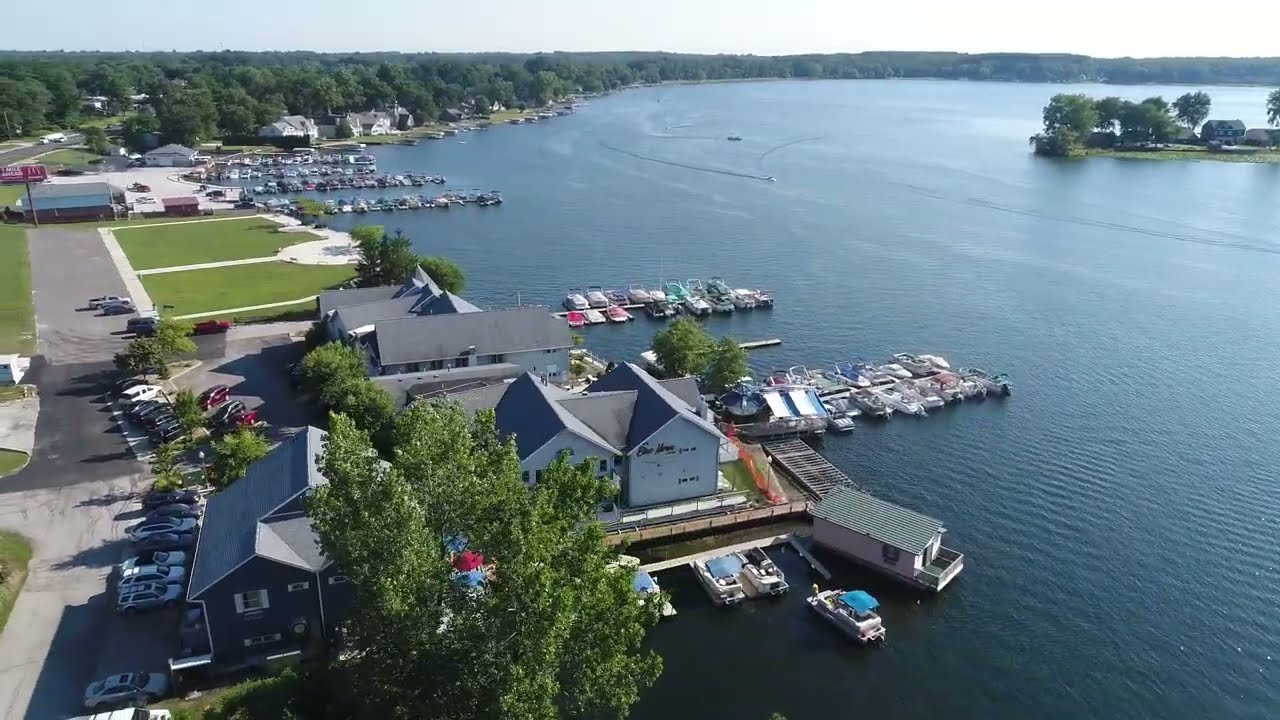
© www.youtube.com/watch?app=desktop&v=NH1po0vfyYE
Being further east than Pine Lake, Hudson Lake is an all-sports lake that won't be as crowded as others. This lake allows motorboats, bass boats, and pontoons. Water skiing, tubing, kayaking, and fishing are lake activities.
Also prohibited: motorized watercraft. A 1,200-person town, Hudson Lake. Around 1,800 people live in nearby New Carlisle. Hudson Lake is a South Shore Commuter Rail stop. This link connects this hamlet to downtown Chicago and South Bend.
Hudson Lakefront residences exist. Some homes have five or more bedrooms over 5,000 square feet, while others have two bedrooms and one bathroom.
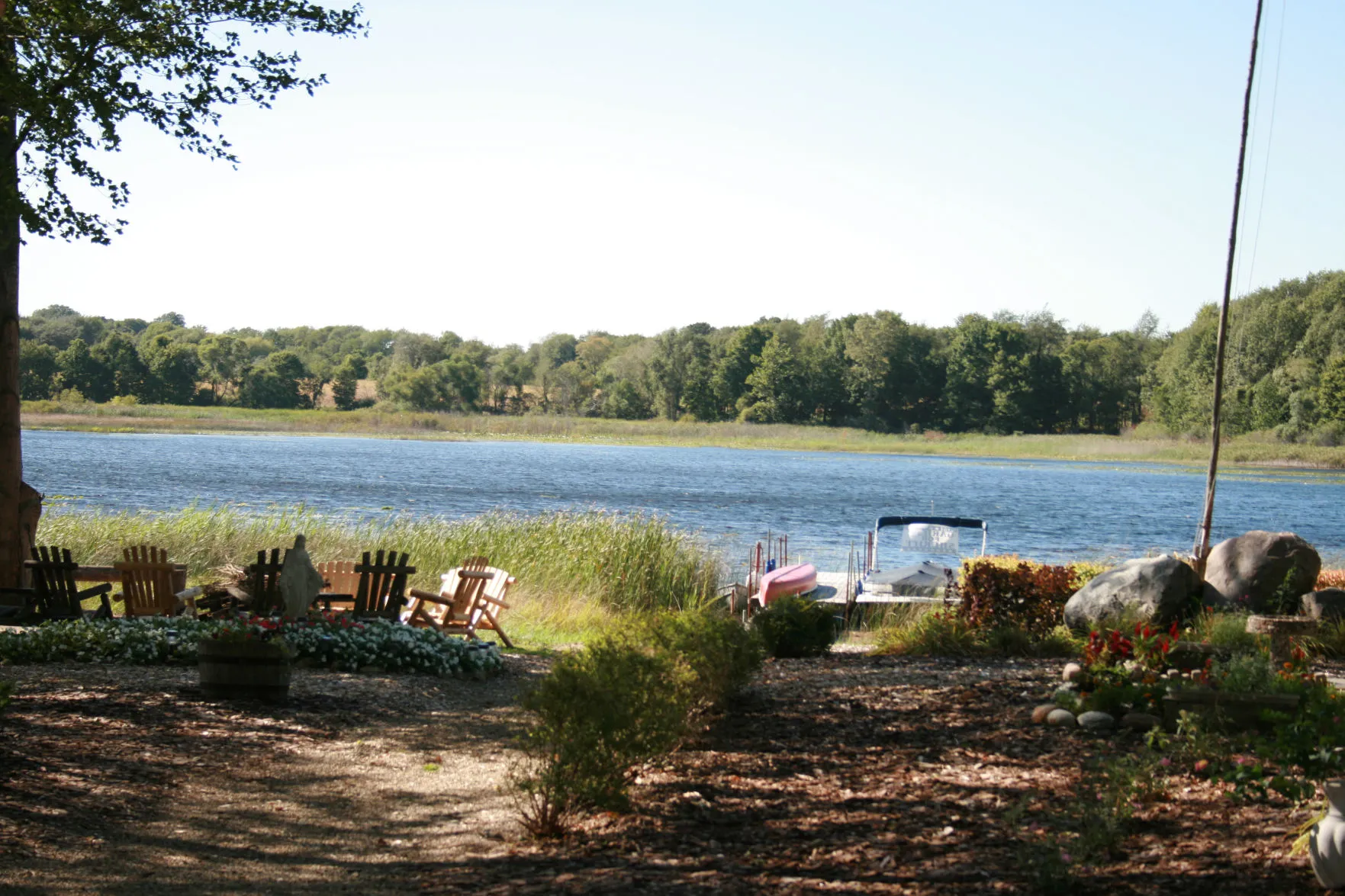
© www.southbendtribune.com/story/sports/2019/05/18/hudson-lake-soon-to-get-a-public-boat-launch/46365729/
Shorewood Forest near Valparaiso, Indiana, has upscale houses and Lake Louise, a private lake. Shorewood Forest is great for daily boating recreation. Private Lake Louise. Lake access is available to residents and guests with a residency.
The lake is all-sports with careful management. Bass boats, jet skis, pontoons, and motorboats are allowed. Kayaks are permitted, but not motorized boats. A bustling 35,000-person Valparaiso, Indiana, borders the area. Every city amenity is in Shorewood Forests. Additionally, the community offers a splash pad, pool, sports courts, walking trails, beach, and dog park.
Shorewood Forest seems like home, not lake life, despite the lake being the neighborhood jewel. Year-round inhabitants predominate. Many enormous homes are in this neighborhood. Homes average four bedrooms, three bathrooms, and approximately 3,700 square feet.
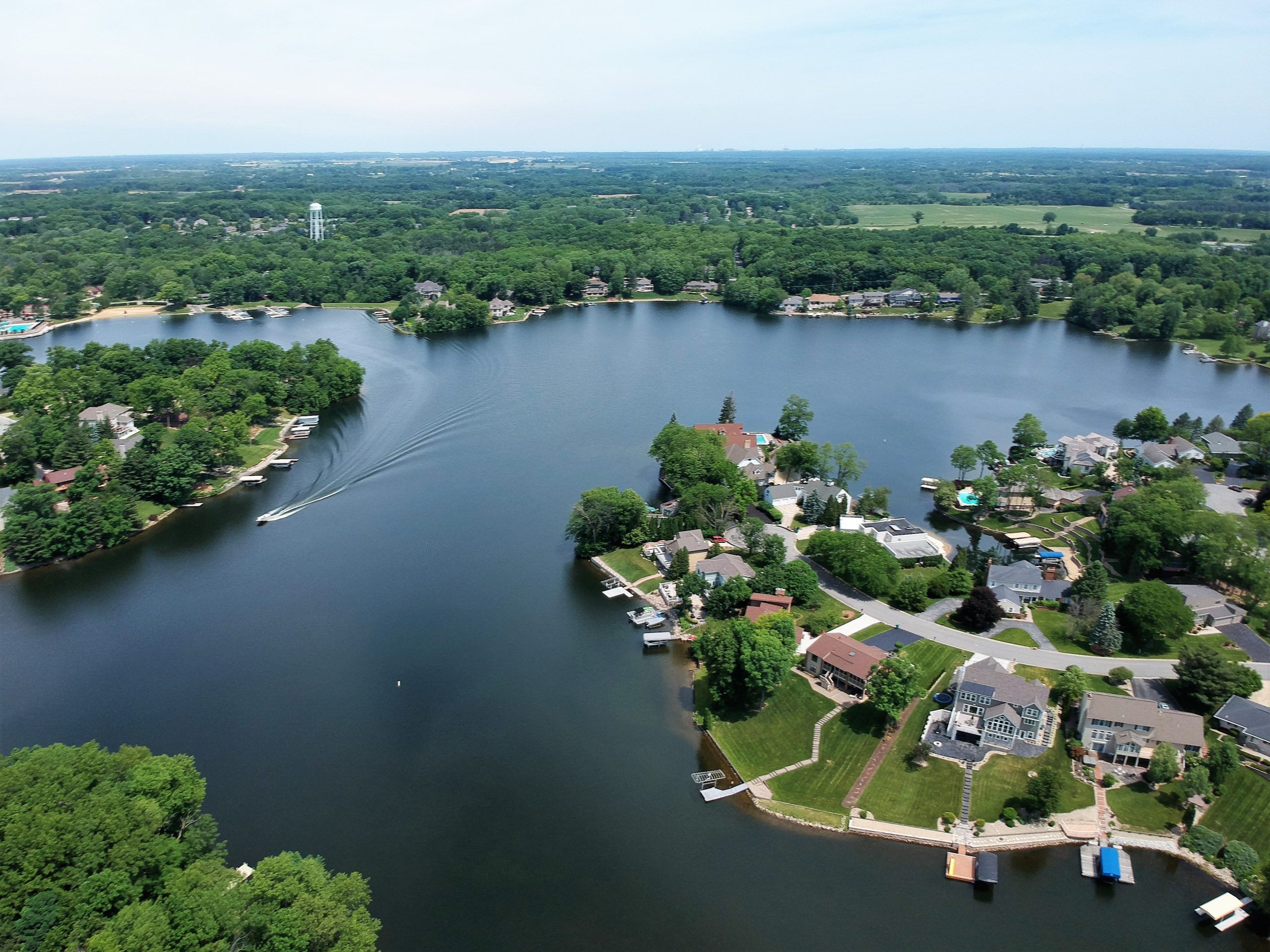
© nadinephilips.com/shorewoodforest
Central Lake County, Indiana's Cedar Lake is an all-sports public lake. Closer towns with additional facilities include Crown Point, Indiana. Cedar Lake is a lake for various activities. Motorboats, bass boats, jet skis, and pontoons are allowed. Lake non-motorized boating is allowed. Fishing is permitted. Several medium-sized cities nearby provide greater shopping and other facilities.
Cedar Lake homes for sale vary in size, features, and price. The range of Cedar Lake homes available year-round includes two-bedroom, one-bathroom homes on 1/10 acre lots to luxury homes with over five bedrooms and over 5,000 square feet. Most Cedar Lake, IN homes have three bedrooms and three bathrooms.

© www.tripadvisor.com/Tourism-g36996-Cedar_Lake_Indiana-Vacations.html
The Lake Dalecarlia Property Owners Association manages the private, all-sports reservoir lake. Motor boats, pontoons, and bass boats are allowed on Lake Dalecarlia. Everyone must follow the property owners association's boating restrictions.
Crown Point, 7 miles north, is a medium-sized city with all amenities. Lake Dalecarlia prohibits non-resident boating. The Lake Dalecarlia Property Owners Association requires watercraft registration.
Searching for Lake Dalecarlia, Indiana, lakefront homes only yields residences. Homes ranged from 1,000 square feet of two-bedroom, one-bathroom to 3,440 square feet of six-bedroom, four-bathroom Lots averaging 6,000–12,000 square feet.
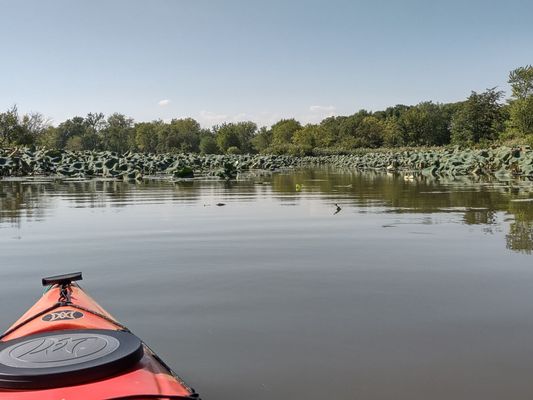
© www.yelp.com/city/lake-dalecarlia-in-us
Lake Bass is a public all-sports lake. Motorboats, pontoons, jet skis, and non-motorized watercraft are allowed. Fishing is permitted. Bass Lake is rural; therefore, shopping and conveniences are scarce. About 4,000 people live in Knox, Indiana, 4 miles north of Bass Lake.
Knox, Indiana, has Bass Lake lakefront houses. Bass Lake waterfront homes often include three or four bedrooms and two to three baths. Homes average 2,100–2,400 square feet. There are also many smaller and larger homes. Lots are more significant than in many lakefront communities.
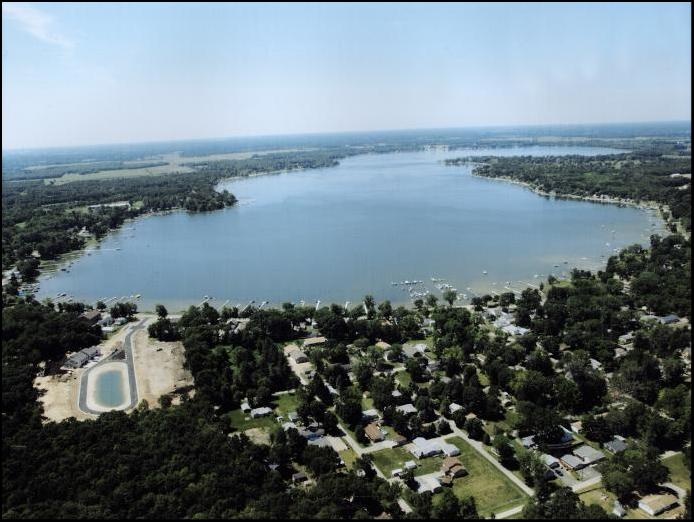
© www.pinterest.ph/pin/266979084129903956/
The second-largest lake in Indiana is Lake Maxinkuckee. This NW Indiana public all-sports recreation area has homes for sale. Motorboats, pontoons, jet skis, and non-motorized watercraft are allowed on Lake Maxinkuckee, an all-sports lake.
Culver, Indiana, has 1,353 residents. The village has restaurants, parks, and a marina. The town hosts the world-renowned Culver Military Academy. Plymouth, Indiana, 13 miles north of Culver, has additional amenities.
Northwest Indiana's most costly lakefront residences are on Lake Maxinkuckee. The most prominent homes can cost more than Lake Michigan lakefront residences. Lake homes vary in size and features. East-side Lake Maxinkuckee homes are among the most expensive.

© www.city-data.com/picfilesc/picc4339.php
These are just some of the all-sports lakes you can check out when you want a lakefront property as your next home. We’ve created another post with all the information you need about no-wake lakes in Northwest Indiana so be sure to visit our website today!
Planning to move to Indiana or do you just want to know the Hoosier State even more? If yes, then allow us to give you more idea of what Indiana is like.
Other than The Indy 500, its vast farmlands, agricultural products, and the University of Notre Dame, Indiana is also home to beautiful lakes.
So if you're planning to relocate to a lakefront property, it's good news as there are tons of locations to choose from.
Life on a large lake is risky, and getting on the water may be difficult. However, it comes with some advantages too, so before you decide to buy a lakefront property, weigh its pros and cons first.
If you're eyeing a home along Lake Michigan in Indiana, there are various communities in the Northwest to choose from, each offering something unique:
About sixty miles southeast of Chicago's downtown lies the 32,000-person city of Michigan City. Along Lake Shore Dr., waterfront real estate buyers can find beachfront Michigan City homes for sale.
Only seven Lake Michigan lakefront home transactions, ranging in price from $725,000 to $3,000,000, have been recorded to the GNIAR MLS since 2021.
From west to east, there are three distinct neighborhoods in Michigan City, Indiana, that provide waterfront real estate for sale: Sheridan Beach, Shoreland Hills, and Duneland Beach.
Washington Park and the Michigan City Marina are the nearest locations to Sheridan Beach. Homebuyers may anticipate a completely beachside setting here, along with easy walking access to parks, the marina, the Michigan City Zoo, and a few local eateries.
Shoreland Hills is located further east and is not close to any amenities by foot. Still, there are actually very few lakeside residences that are listed as being in Shoreland Hills.
Last but not least, purchasers might discover a Michigan City lake house in Duneland Beach for sale. Except for one thing, all of the properties in Duneland Beach are waterfront. Indeed, they are lakefront, but they are situated on the south side of Lake Shore Drive since the beach is owned by the neighborhood association, which has a building prohibition. Duneland Beach lakeside homes are, well, lakefront, but you have to cross the street to get there. From properties along Lake Shore Dr., there are unimpeded views of the lake since you see across the bare beach that you and approximately 150 other residents jointly own.

© www.britannica.com/place/Lake-Michigan
In the Indiana bedroom community of Long Beach, buyers can find homes for sale that are located on Lake Michigan. This community also has 2.3 miles of Lake Michigan shoreline. This encompasses Moore Road and Lake Shore Drive from about west of Blanchard Ct. Michigan City, which encircles Long Beach to the west, south, and east, has all the amenities that are required. Long Beach is a good place to seek a lakeside house for sale in Michigan City.
Six Lake Michigan beachfront Long Beach houses, with prices ranging from $1,225,000 to $2,290,000, have sold through the GNIAR MLS since 2021. Long Beach waterfront properties for sale usually offer 2,300 to 5,000 finished square feet, three bedrooms, and two bathrooms. The dimensions of lots vary from 7,000 to 25,000 square feet.

© www.realcedar.com/blog/project-of-the-week-long-beach-residence/
Beverly Shores in north east Porter County offers Lake Michigan lakefront residences. This 600-person bedroom community is called Beverly Shores. Connected to downtown Chicago by the South Shore Commuter Rail Line, it has minimal amenities; however, Michigan City and Chesterton have everything.
Purchasing a waterfront property in Beverly Shores, Indiana, is less expensive than Long Beach or Michigan City. The waterfront in Beverly Shores was selling for between $522,000 and $875,000; however, this is not true lakefront real estate.
The houses near the lake in Beverly Shores are all located on the south side of Lake Front Drive, which runs parallel to the lake. You must therefore go across the beach and cross the roadway to get to the ocean. In essence, residences on the lake do not actually own the lakefront.
A marina is not present in Beverly Shores. Alternatively, locals can take a boat out from Michigan City's marina, which is about four miles distant. On the other hand, Beverly Shores is close to several protected areas, such as Indiana Dunes National Park. For those who enjoy the outdoors, this adds significantly to the value of Beverly Shores, Indiana, real estate.
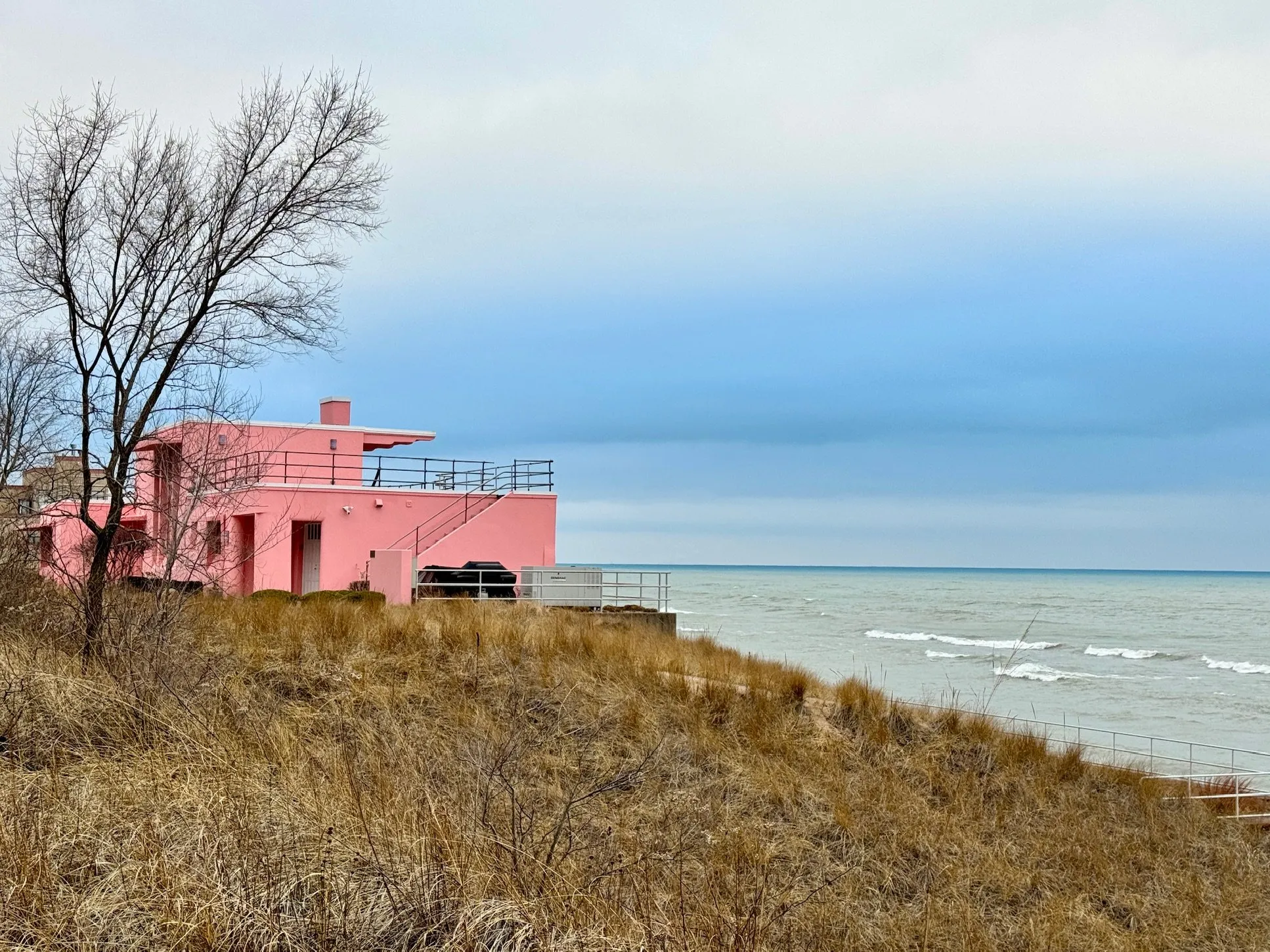
© www.chicagotribune.com/2024/01/14/historic-beach-home-in-beverly-shores-on-market-for-25-million/
About 1,200 people live in Ogden Dunes, Northwest Porter County, 40 miles from downtown Chicago. A bedroom community surrounds Lake Michigan, Ogden Dunes has trails, parks, and protected places nearby. The South Shore Commuter Rail Line stops at Ogden Dunes. Chesterton and Portage, Indiana, offer more amenities.
In Ogden Dunes, Indiana, real estate buyers can acquire lakefront homes on Lake Michigan. Recently, the price range for beachfront properties in Ogden Dunes was $860,000 to $1,250,000.
Shore Drive runs parallel to the shoreline, and on its northern side are lakefront residences. However, in Ogden Dunes, erosion has reduced the amount of beach in recent years.
Ogden Dunes does not have a marina where one could launch a boat onto Lake Michigan.
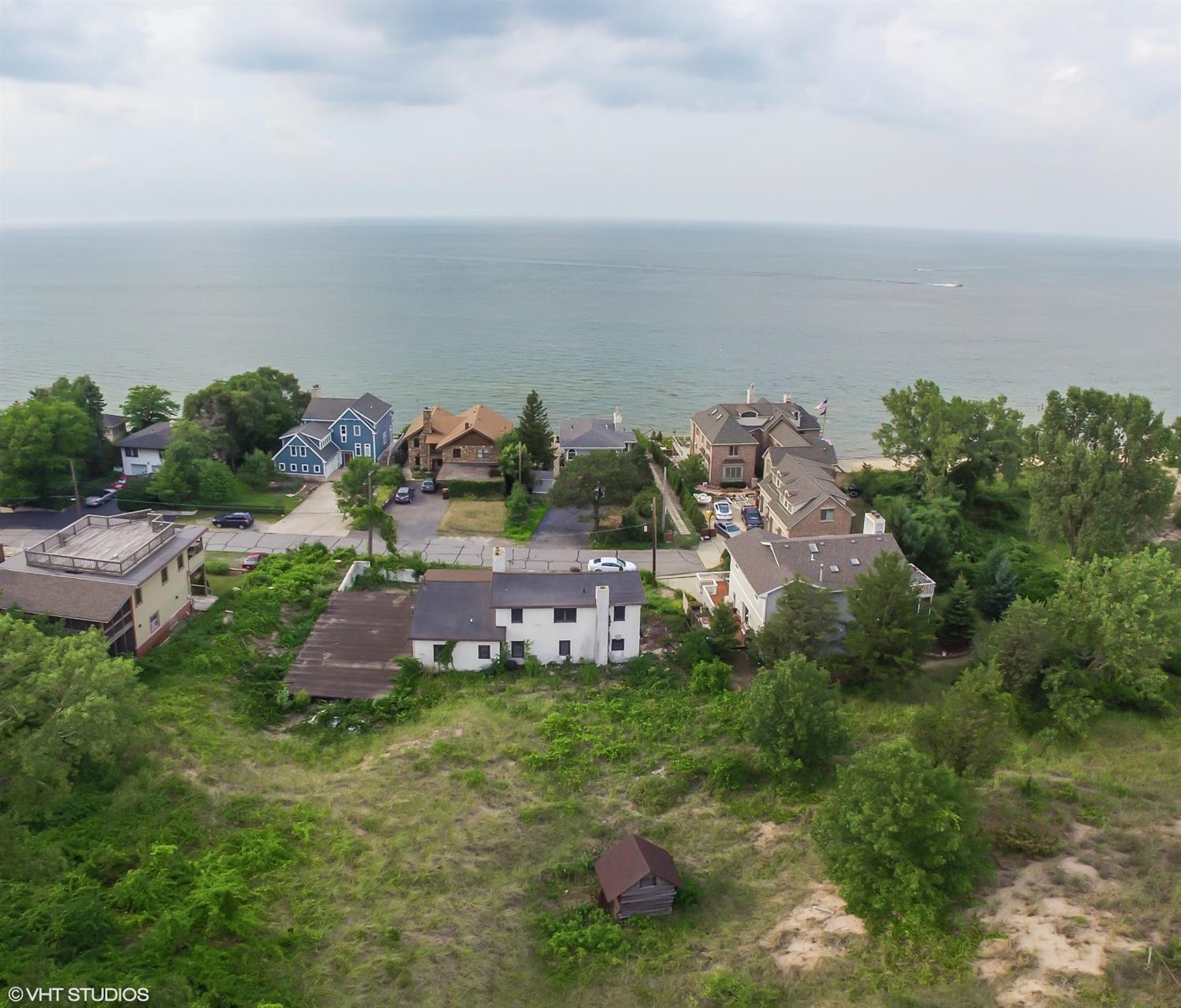
© www.atproperties.com/398806/5-shore-drive-ogden-dunes-indiana-46368-nwi
In Gary, Indiana, there is a neighborhood called Miller Beach on the northeast side. This is where purchasers may find beach houses for sale in Miller.
The population of Miller Beach ranges between 9,000 to 10,000. Because Miller Beach has so few amenities in reality, Gary and Portage, Indiana, subsidize the region. There is a stop on the South Shore Rail Line that connects Miller Beach to downtown Chicago. The Loop is 35 miles southeast of Miller Beach. The Miller Beach marina is nonexistent.
Depending on its size and amenities, lakefront Miller Beach real estate often sells for between $600,000 and $1,400,000.
These are just some lakefront locations in Indiana. Watch out as we list down the All-Sports Lakes in Northwest Indiana.
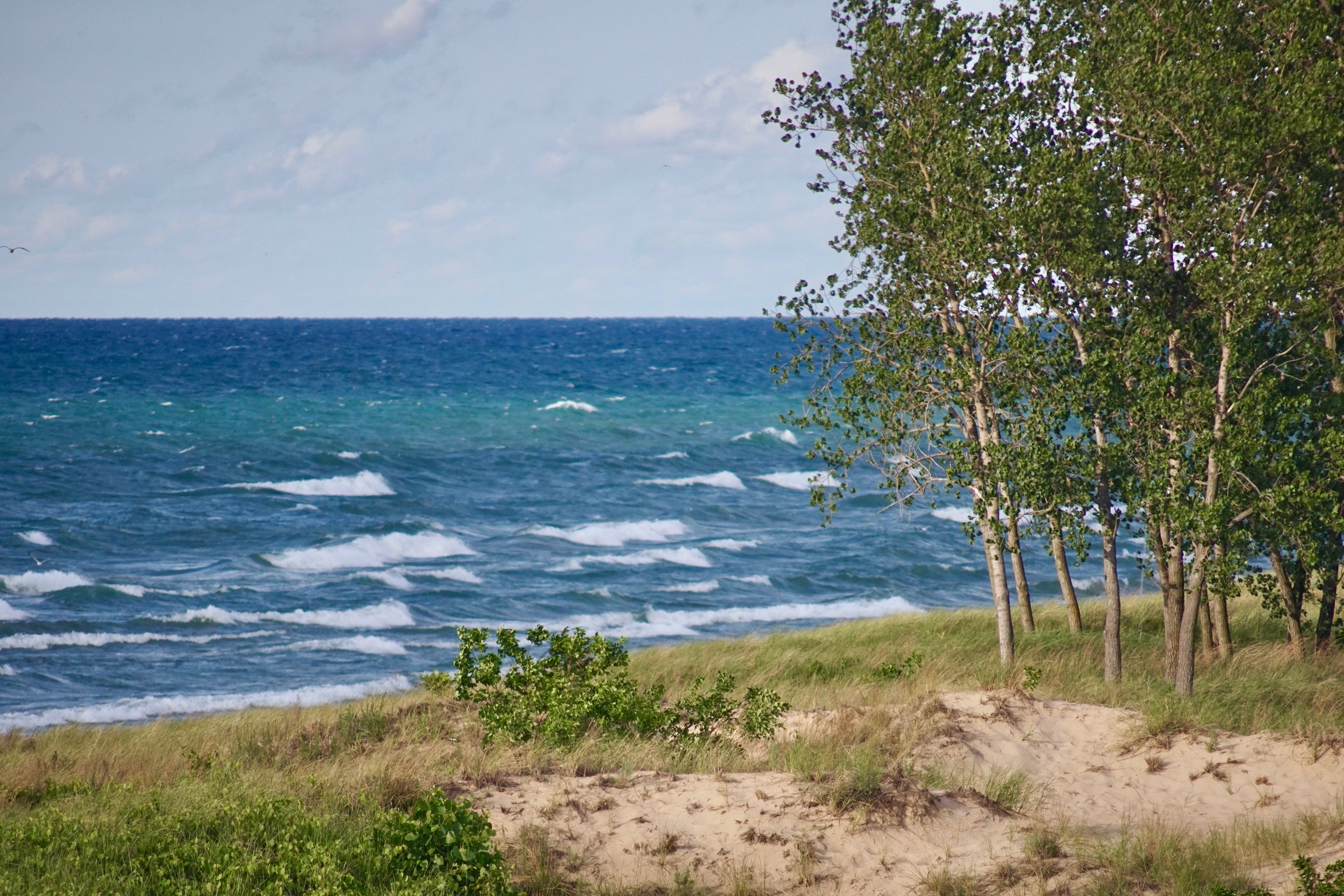
© www.visitmillerbeachgary.com/find-us
Are you ready to upgrade your kitchen into a haven for anybody who enjoys cooking? If yes, do not look any further!
If you're considering renovating your kitchen, you should know what styles are trendy right now for this room that serves as the center of your home. Whether you want to make significant changes to your kitchen or a few adjustments, these creative renovation kitchen ideas will motivate you to think outside the box.
Here are nine renovation kitchen ideas you can think of if you want to upgrade your kitchen:
In recent years, many homeowners are choosing to open up the space in their kitchens. An entirely open-concept kitchen, where no wall divides the kitchen from an adjacent space, is the preferred design for 64% of homeowners remodeling their kitchens. Enhancing entertainment potential and increasing functionality are the two most often mentioned reasons for designing an open-concept area.
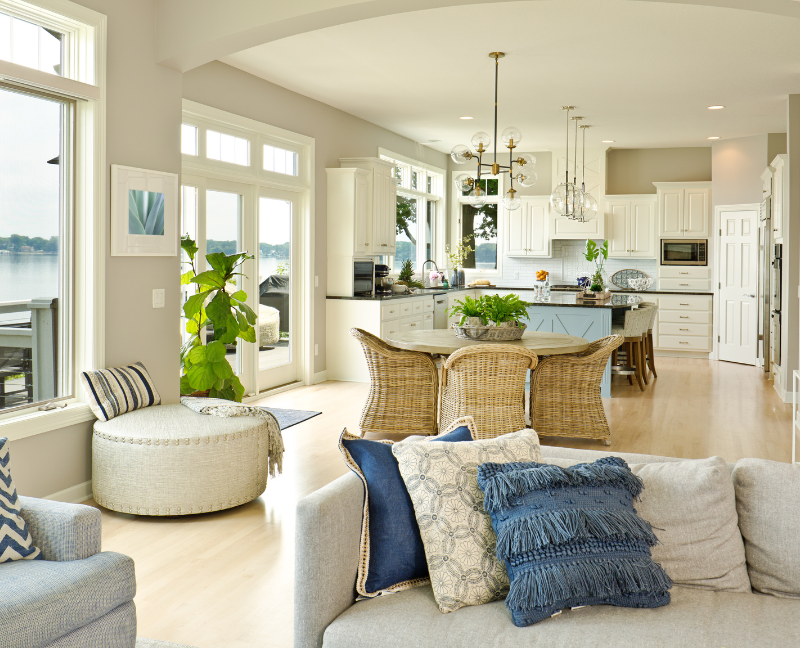
There are a lot of renovation kitchen ideas that involve substantial structural work, but most of them are centered on changing the room's design. 45% of homeowners upgrading their kitchens redesign the layout, and 43% modernize their systems. Alterations to the ceiling height and reorganization of the flooring are two examples of these modifications.

Appliances that are equipped with high-tech features are becoming increasingly popular among homeowners. Some homeowners upgrading their homes prefer home appliances connected to Wi-Fi.
In comparison, some choose devices that can be operated using a smartphone or tablet. Meanwhile, some homeowners would replace all their appliances simultaneously during a makeover rather than just a handful.

The most frequent reason given by homeowners renovating their kitchens is to meet the needs of elderly family members. A few suitable kitchen modifications for the age include rounded counters, pullout cabinets, more lighting, broad drawer pulls, and non-slip flooring.

During a renovation, many homeowners change the backsplash in their kitchen. Engineered quartz is the most preferred material for backsplashes, followed by ceramic or porcelain tile. However, natural stone materials like granite, quartzite, and marble are equally popular among homeowners.
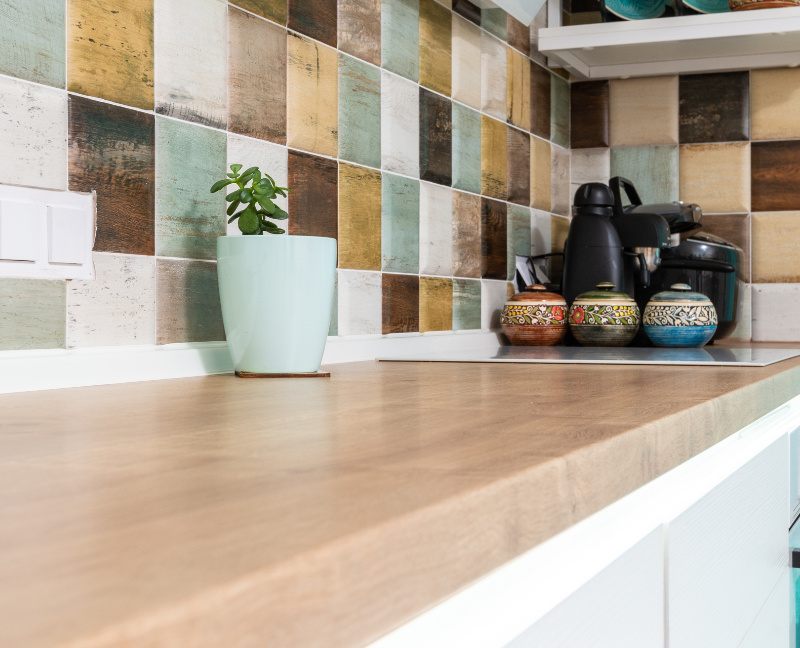
A larger kitchen island gives you more room for cooking and hosting guests, so many homeowners choose to expand their islands. Forty-two percent of homeowners remodeling their kitchens design seven-foot or longer kitchen islands.
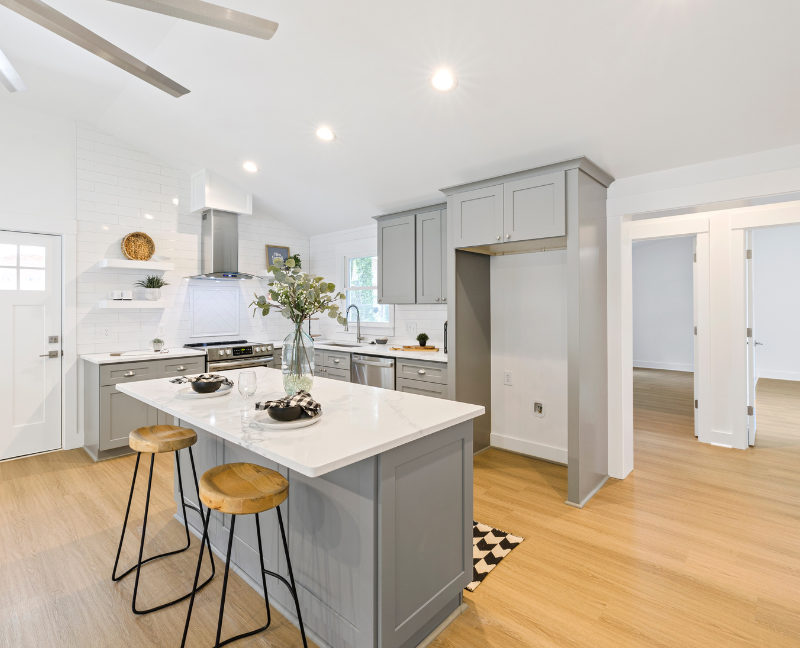
More color will be in the kitchen this year, especially on cabinets. Kitchen cabinets in wood and green are growing, but white is still the most popular. Wood tones are most famous for bottom cabinets, followed by blue for island cabinets.
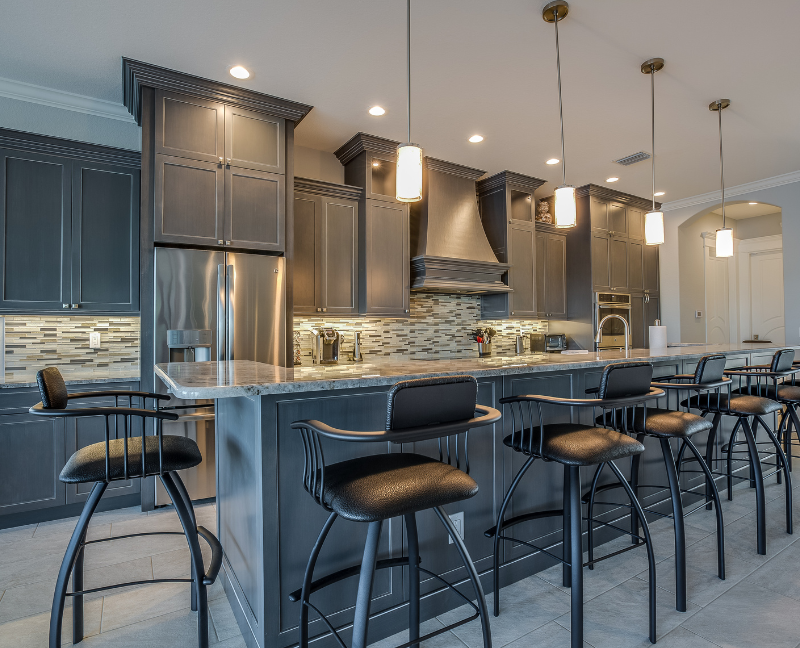
Organization is becoming increasingly important because people desire kitchens that are functional for them. Cutlery and utensil organizers, spice racks, and cookie sheet organizers are among the features that are becoming more and more popular.

Your kitchen's lighting creates a mood. Recessed lighting is still homeowners' first option when remodeling their kitchens. Some homeowners choose pendant lights, although under-cabinet lights are also trendy.

Check out these best kitchen renovation ideas to turn your kitchen into a gastronomic paradise. Elegant rustic themes to sophisticated modern designs fit any taste. Prepare to maximize the renovation kitchen ideas' beauty, functionality, and personal style.
Many buyers today ask themselves, "What are the things to think about when purchasing a home?" Because of the changing housing market trends and unstable economic situations, choosing wisely can be challenging.
Planning things well is important, especially since buying a home is a huge decision and investment. Here are things you need to know when purchasing a home in the current market and things you need to consider before signing a contract.
Acquiring a home involves more than just choosing the ideal layout and style—it also involves fitting in with the overall real estate market conditions. Understanding the subtleties of the ever-changing housing market of today can help you differentiate between a profitable investment and a possible risk.
The decision-making process is heavily influenced by the personal circumstances of the majority of prospective homeowners. Making sure your monthly payments are within your means is crucial because mortgage rates fluctuate.
However, in addition to monthly mortgage payments, these are the things to think about when purchasing a home such as the closing expenses, property taxes, and possible changes in house prices all impact your choice.
In these situations, your credit score plays a crucial role in figuring out what kind of mortgage loan you might be eligible for. Lenders typically offer more favorable terms to borrowers who have higher credit scores.
This implies that their purchasing power in the current market may be further increased by their eligibility for better loan options and reduced mortgage payments. You can also strengthen your negotiating position by making sure you pay your credit card bills on time and use credit cards sparingly.
Some locations have seen pressure on median home sale prices to rise, while others have an abundance of housing options as a result of a boom in inventory. Before agreeing to a contract, prospective buyers should investigate the housing inventory in different neighborhoods.
It may be quite helpful to have an experienced RE/MAX Advanced Realty real estate agent on your side, particularly while navigating the complexities of the housing market. Our team provides excellent service, making sure that prospective buyers are aware of everything from mortgage rates to credit score criteria to the current pace of the market.
Before buying a home, you must understand that there are a lot of things to think about. Knowing the real estate market and your finances can make all the difference.
Here is a brief guide to help prospective homeowners navigate the complex process.
Having a solid foundation of financial security is the first step on the path to house ownership.
It is essential to have a solid understanding of the real estate market to guarantee the success of your investment.

When deciding to purchase a home, your personal life and your goals for the future are important considerations.
An extensive local real estate market knowledge is essential to making the right decision.
Regarding the potential for appreciation of your investment, selecting the appropriate neighborhood can have a significant impact.
With their extensive market knowledge and expertise, real estate agents can help when you purchase a home.
Before purchasing a home, you must understand your lender's position.
Real estate may appear like a good investment, but personal investment techniques must be considered.
Buying a home is a big financial decision that can greatly impact your life. That said, it's important to learn about the current housing market trends and prices can influence your purchase in a buyer's or seller's market.
If you want to learn more about the real estate industry, we have a lot of resources you can use. Just visit our website or better yet, call us at 317-316-8224 so we can help answer your questions.
If you want to remodel your home by taking a loan, make sure to spread payments according to your paying-off capability.
After you decide that it’s time to look into some home improvements as well as upgrading your living environment, you can do so in many ways, from bathroom repairs to adding an extension to your current space of living.
But first, let's tackle the basics.
A home improvement loan is a type of personal loan specifically used for repairs, home maintenance, and other esthetic or functional enhancements.
Loans for home renovations can be used for everything -- from minor upgrades like changing the kitchen sink to major renovations like redoing every room. For homeowners, obtaining a home repair loan is a desirable alternative since it typically has fixed interest rates and repayment schedules. While keeping up with your loan repayments, you can forecast and control your monthly financial flow.
Like other kinds of loans, you get a lump sum that you can use for renovation-related expenses, such as:
You will then repay it with a fixed interest rate over some time. That said, you have to know if borrowing a home improvement loan is what you need at the moment. It can be expensive, depending on the interest rate you'll get, but if it will improve your quality of life, it can be worth it.
Remodeling is not just a small change that is going to make you temporarily happy, but a strategic step towards raising the value of your home, especially if you are planning to sell your property shortly.
We should notice the difference when it comes to the financial side of home improvement. While decorating the home can be done without so much financial investment, some major technical improvements such as central heating could cost you significant investment.
So before signing up for a home improvement loan, figure out how much you need first. Make sure that the amount you’re going to borrow is enough to cover your estimated expenses; however, don’t go more than what you need or can afford to avoid being trapped into debt.

If you have some experience in home remodeling that would be beneficial in the sense of saving some money, while it is highly advised to hire a good tradesman and have a walk-through with him to see what needs to be done in the house.
He will be able to provide you with a quote for the job that you guys are planning to get done. It is also important to know the difference between a “quote” and an “estimate”. Quotes are a more set type of investment evaluation, with précised amounts for each part of the job, including material and labor, while estimates can only give you an approximate amount. Do not limit yourself to only one tradesman, but have at least a few of them come over and give you their offers.
Once you have offers from contractors in writing and you know how much it takes to get the job done - it is time to look for funding. Since most of us do not have substantial savings for these types of projects, we decided to go with loan providers that offer loans that are going to be put toward home improvements.
As well all know, they do not work for free, so interest will be applicable in this case. Since this is going to be an important financial decision, make sure you can afford the loan before you take one on. While there are many different types of loans available on the market, when it comes to a home improvement loan, it is typical that this type of loan is an unsecured personal loan, which means that is not secured against an asset such as your property and most of the time should be repaid within 24 to 48 Months.
For larger home improvements that need an increased amount of funding, some homeowners consider tapping into their property’s equity to fund home improvement.
When you apply, lenders will check your employment status and income. Having the necessary paperwork together in advance helps expedite the application process. Unlike a home equity loan or home equity line of credit, a home renovation loan does not require a home evaluation because there is no home equity involved.
Once you’re done selecting a lender, you must fill out an official application. While most loan providers allow you to apply online, you may need to apply in person at smaller banks or credit unions. After submitting your application, you can hear back the same day and get funded in as little as one to seven business days.
A home repair loan typically does not qualify for tax deductions for interest paid.
On the other hand, you might be able to lower your tax liability by updating your home with energy-efficient improvements. A 30% tax credit, up to $1,200 a year, is offered to homeowners who upgrade their homes with energy-efficient features including windows, doors, and central air conditioning as part of the Inflation Reduction Act of 2022, or IRA. A 30% extra tax credit is available for the purchase and installation of solar panels.
These are the basic things you need to know about home improvement loans. If you have more questions on this topic or any home-related inquiries, we are more than happy to answer them. Leave a comment or send us an email at dennis@indyhomepros.com so we can assist you!
More people are adopting sustainability as a lifestyle, not simply as a catchphrase. As homebuyers seek eco-friendly homes, this shift in consciousness is affecting the real estate market.
In today's market, marketing eco-friendly homes requires knowledge. In this blog post, we will talk about sustainable home living, eco-friendly housing amenities, and how real estate agents may market and sell eco-friendly homes effectively.
The trend toward sustainable home living has significantly increased in recent years. For instance, homebuyers consider a property's ecological footprint, location, and visual appeal. Growing market segments now prioritize eco-friendly features, decreased waste, and energy efficiency. The needs of environmentally concerned purchasers are changing, and real estate brokers need to understand this and modify their approaches accordingly.
Understanding a home's eco-friendly features is crucial when marketing it. This knowledge allows real estate agents to communicate these features' benefits to potential buyers effectively.
Essential components include:
ENERGY STAR and LEED certifications are two examples of certifications that can provide concrete validation of a property's commitment to social and environmental responsibility.
The real estate industry has recently seen green certifications emerge as powerful marketing tools. Real estate agents need to be aware of the significance of several certifications. A property's marketability can be improved by understanding the prerequisites and benefits of any recognized certification, such as LEED or ENERGY STAR. Highlighting these certifications in marketing materials and property listings in a competitive real estate market may attract environmentally conscious buyers and set a house apart.
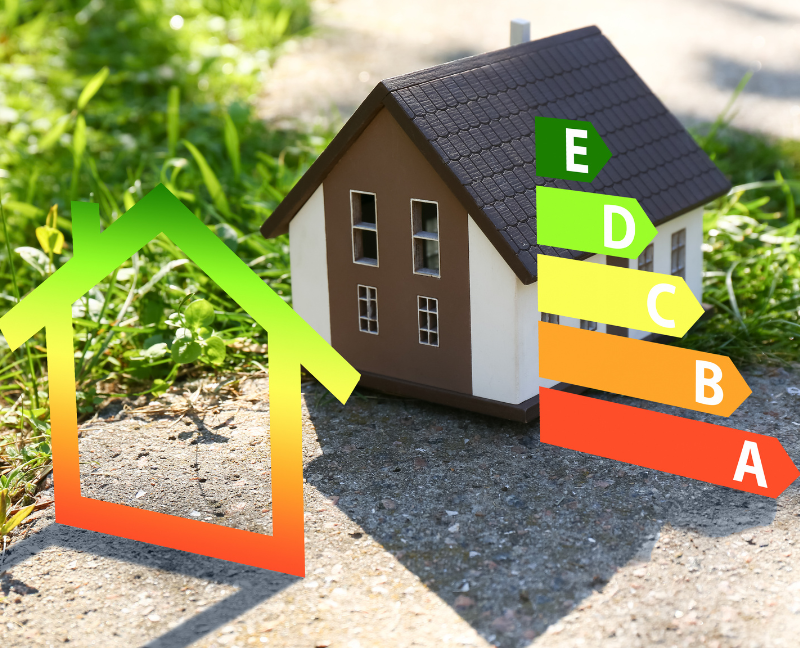
Eco-friendly homes for sale require appealing marketing. Listings of properties are needed to promote environmentally friendly characteristics and to include images of high quality that are conscious of the environment.
Producing specific marketing materials highlighting the advantages of the house's environmental attributes, such as reduced energy bills and small carbon emissions, may also be an effective way to attract buyers worried about the environment's future.
Many purchasers need to fully understand the long-term benefits of environmentally friendly features. To fulfill their educational responsibilities, real estate brokers should explain how features such as solar panels, energy-efficient windows, and smart home technologies contribute to the preservation of the environment and result in cost savings over time. By providing information about decreased utility bills and their favorable environmental impact, it is possible to demonstrate attractive selling factors.
Real estate agents who want to specialize in environmentally friendly properties should make a deliberate effort to cultivate relationships with businesses that create and develop sustainable structures. Establishing these relationships demonstrates a dedication to environmentally responsible behaviors and allows access to a consistent supply of ecologically friendly dwellings. Participating in networking events within the community of sustainable builders can provide access to one-of-a-kind listings and opportunities for collaboration.
Sustainable home living is changing the real estate industry and real estate agents, home sellers, and home buyers must learn to adapt.
To effectively sell eco-friendly homes, agents must know green features, certifications, marketing, buyer education, and strategic collaborations with sustainable builders. They must also know how to prioritize sustainability to meet market needs and promote a greener real estate sector.
Have you heard of the term "dry closing" before?
If yes, but you're not certain what it means or if it's your first time hearing it, then you're in the right place.
Dry closing is when all the papers are signed, and payment is sent, but the ownership transfer doesn't happen immediately because of an unfinished business. In simple terms, it's when a buyer and seller agree to close on a house before any money has been handed in.
In this post, we'll discuss what dry closing is about, why it occurs, what makes the seller agree to this as well as other frequently asked questions about it.
A dry closing differs from a "normal" wet closing simply because the seller is paid after the buyer fulfills the mortgage criteria and the closing documents are signed.
Dry closings occur only when the buyer and seller agree on the same thing. When events arise that ordinarily lead to a buyer or seller pulling out of the sale, they are designed to keep the transaction moving forward. Lastly, just a few states allow dry closings.

When selling a house, people expect closing payments. Most states mandate a 'wet close' for all real estate transactions.
Every closure should be wet, but the lengthy and challenging process may prevent the buyer from paying on closing day. The parties can wait two or three business days for the earnest cash rather than dissolve and fight over the deal.
The buyer or lender usually causes a dry closing since the buyer's finances to pay for the selling are delayed. This could be due to a payment glitch that takes time for the lender to fix, the buyer needing to meet an outstanding condition to get a mortgage, or the seller having a similar issue with their property that prevents a sale condition from being met.
Dry closings keep deals alive and ensure buyers get houses and sellers get money. Thus, dry closing may be preferable to wet closing, which fails if the seller doesn't obtain their money on closing day.
Dry closings do not necessarily mean the buyer is untrustworthy. Deals sometimes need to be corrected, and funding arrives late. That means it will come so close first and retrieve your money a few days later.
To answer this, you must consider the role of the lender. Overall, they have a huge influence on real estate closing. A buyer seeking a home from a seller rarely has the money to pay. So they borrow money from lenders to be able to purchase the property.
The buyer puts the property as collateral for the loan, so the lender may repossess it and get their money back if things go wrong. Thus, the lender pays the seller, not the buyer. If the lender delays sending the loan to the buyer, a dry closing may be beneficial while the lender resolves its concerns.
While the buyer and lender are typically the source of a dry closing in real estate, the seller may sometimes be the one to force a post-closure funding delay.
After a dry closing, sellers should not relinquish their home's title. Keep the title and key until they have money. In the odd event that finance fails, it can be difficult to reclaim the title from the buyer if the transfer is already completed.
Dry closing is when a buyer and seller agree to close on a house before cash is exchanged, with the seller paid once the buyer meets mortgage requirements and signs closing documents. The seller's credibility is rarely involved in this situation, which usually requires buyer financing delays.
Though it delays seller payment by a few days, a dry closing can keep deals alive and go forward. Providing funds and causing delays are vital to the lender. At a dry closing, sellers should keep ownership until payment is made to avoid financing issues.
Do you want to grow your wealth? How about making more money while you sleep? If so, adding a passive income into your portfolio is a good idea, and one of the best ways to do it is through turnkey real estate investments.
For those looking to build long-term wealth and passive income, turnkey real estate is becoming a more and more popular alternative with several advantages. Usually handled by a property management business linked with your turnkey partner or a trustworthy third-party vendor, a turnkey property is fully refurbished and ready for immediate rental or occupancy.
Investors get quick revenue from turnkey real estate. Since the house is renovated and usually occupied, you'll make rent right away. This entices investors who want passive income without delays in buying, remodeling, and selling a property. With residents, you never lose rental income.
Turnkey real estate investment saves investors time and effort. The largest time saver is learning many of the subtleties of real estate investing, which takes time and dedication. The most stressful parts of real estate are finding, buying, and renovating, handled with turnkey real estate. Investors will also avoid front-end heavy lifting. Providers hand-pick rental properties for their markets.
Property management is commonly included with turnkey real estate investments. Property managers manage resident relations, upkeep, and rent collecting, relieving investors of the burden. However, passive investment is never 100% passive; thus, controlling your property manager is your most significant obligation.
Turnkey investments typically carry fewer risks than traditional real estate ventures. Renovations have already been done to the property; thus, unforeseen maintenance problems or repairs are less likely.
The possibility of extended vacancy periods is reduced by having inhabitants in place when the home is bought or on the publicly available list. This risk decreases if you buy multiple homes and diversify your income.
Real estate is an asset class that correlates less to traditional financial instruments like equities and bonds. For those who have relied on more traditional options, this makes it a wise addition to your portfolio.
Investors can hedge against inflation, create passive income, and increase property value using turnkey real estate, the most passive option, including complete ownership. With proper execution, turnkey real estate is a low-risk way to diversify your portfolio.

Turnkey investments are stable since rental income is predictable. Investing in a property management team ensures a steady income without direct involvement. This predictability may be highly alluring to investors looking for stable long-term profits.
Turnkey real estate investment lets investors enter faraway real estate marketplaces. Investing in markets with high rental demand or appreciation without being there is highly beneficial. Trusting a turnkey provider will give you market access with superior circumstances for immediate and long-term rental investing success.
Turnkey properties are a great starting point for anyone new to real estate investing. Professionals handle property acquisition, refurbishment, and resident management, making real estate investing easy for beginners. Enjoy the immediate rewards and learn real estate investment without making rookie mistakes.
Conclusion
Real estate investment is risky, but turnkey properties make it easier. However, you still need to do your own research and practice due diligence for every investment to ensure the turnkey property matches your financial goals and risk tolerance.
To learn more about turnkey or real estate investments, you can visit our website or call us at 317-316-8224 so we can assist you.
When buying a home, two of the common terms you might hear a lot are "Annual Percentage Rates (or APR for short)" and "Interest rates." Now, while these two might sound like they mean the same, the truth is, there are a few differences that you should know.
So before you get a mortgage, let's learn how:
First thing first, let's learn what these two terms are.
Your interest rate is what you pay a lender when you borrow money for a set amount of time. The mortgage interest rate may be fixed throughout the loan or may vary with market rates. It is always expressed in percentages.
On the other hand, an Annual percentage rate (also known as APR) is the total amount of money you pay for a loan, which includes the interest rate plus any other costs and fees that come with the loan, like private mortgage insurance (PMI), prepaid interest, some closing costs, mortgage points (also known as discount points), and other possible fees.

Your APR is less under your control. Broker and origination fees are other variables that your lender controls and affect your annual percentage rate.
By paying 20% down, you can avoid private mortgage insurance, but comparing lenders is ideal. Loan plans and APR rates should be compared.
Your lender uses personal data to calculate interest. None of them utilizes the same interest formula although some mortgage lenders provide ten interest rates.
Meanwhile, banks consider market interest rates and real estate economy conditions while computing your rate. Your mortgage lender can cut your interest rate in ways. Your rate will generally drop if you reduce your lender's risk.
To get better rates, you have to improve your credit score, a three-digit statistic that shows lenders how you use credit. If you have good credit, it means you pay on time and don't borrow more than you can afford.
Meanwhile, having low credit makes you riskier to lenders as it usually means you have a history of late payments, defaults, etc. As a result, you might get a higher interest rate from a lender or might not get approved at all. VA, FHA, and USDA loans can cut your interest rate.
A federally insured loan will reimburse your lender if your home is foreclosed. The interest rate on a government-backed loan may be lower than on a traditional loan. Remember that mortgage insurance will affect your payment, so consider all your options.
Interest rates are the annual cost of borrowing money whereas APR includes additional expenses. Your APR will be larger than your interest rate because it has interest and other loan expenses.
Your effective interest rate can also be considered your annual percentage rate (APR). Be sure to take into account both the interest rate and the APR while selecting the mortgage loan that is most suitable for your needs.
The Bottom Line
Your APR comprises your interest rate and any other costs or fees you may be required to pay your lender. Your interest rate is the percentage of interest you pay on a loan. Discount points, private mortgage insurance, and brokerage fees are a few of the most popular extra costs. Your annual percentage rate (APR) represents the real interest rate you will pay on your loan after you get it.
Before a loan closes, the lender must disclose to you both the interest rate and the annual percentage rate. By maintaining your credit score and, potentially, selecting a government-backed loan, you can reduce your interest rate. Nevertheless, since the lender determines a lot of these fees, you need more control over your APR. That being stated, comparing comparable loan programs offered by other lenders is the greatest approach to getting a lower APR.
Learn more about mortgages here.

8313 W. 10th St
Indianapolis IN 46234
dennis@indyhomepros.com
317-316-8224